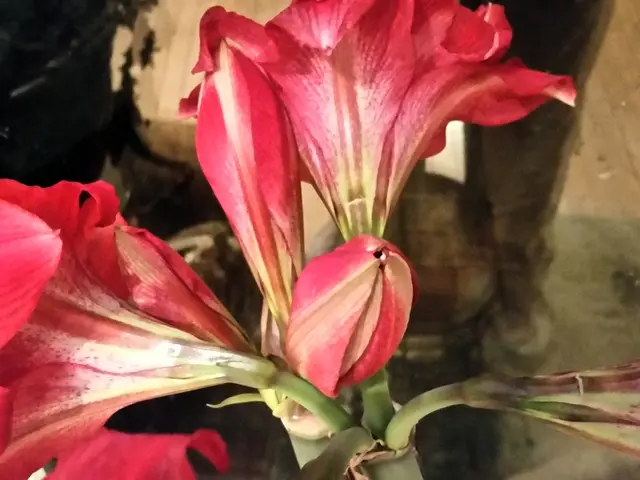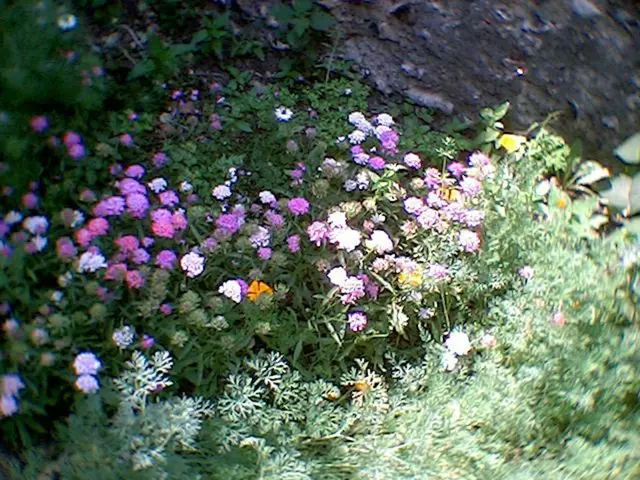Soil-Freed Flora Wonders: Astonishing Aerial Plants Grace Nature's Canopy
Vibrant Air Plants: Surviving in the Air without Soil
Curious, captivating, and oddly fascinating — air plants (Tillandsia) have emerged as a must-have addition to any indoor or outdoor garden. Though belonging to the Bromeliad family, these 650-species wonders break the mold of conventional plant life by thriving without dirt, making them a standout in the world of greenery.
Life beyond Soil
Originated in Central and South America, Mexico, and parts of the southern United States, air plants dwell happily in a diverse range of natural settings, from dense rainforests to expansive deserts, and even towering mountain ranges. This adaptability gives birth to an impressive variety of shapes, sizes, and colors within the genus.
As epiphytes, air plants grow on other plants or structures, such as trees or rocks, without parasitizing them. Instead, they've evolved intricate mechanisms to gather essential nutrients and hydration. A key feature of these marvels are tiny scales called trichomes covering their leaves. These minute structures open and close to catch moisture and nutrients from the atmosphere, making air plants resilient in seemingly inhospitable environments.
Apart from their nighttime "breathing" behavior, Tillandsias use a unique process called CAM photosynthesis, an adaptation that aids them in conserving water in their often dry natural habitats.
Living without Soil
- Trichomes: The tiny specialized structures on air plant leaves absorb water and nutrients from the air, rain, and organic matter that gathers on their surfaces.
- Epiphytic Existence: Growing on other plants or structures allows air plants to access sunlight and moisture more efficiently in their natural landscapes.
- Root System: Unlike most plants, the roots of air plants primarily serve as anchors rather than nutrient absorbers.
- Nutrient Absorption: The trichomes on air plant leaves are exceptionally efficient at taking in nutrients from their surroundings.
Soil: A Necessity Most Plants Can't Do Without
Unlike air plants, most plants heavily rely on soil for fundamental functions:
- Nutrient Bank: Soil acts as a valuable reservoir for crucial nutrients plants require for growth, stockpiling minerals, organic matter, and beneficial microorganisms.
- Water Storage: Soil retains water, making it accessible to plant roots through its pore spaces.
- Oxygen Access: Well-structured soil provides air pockets that provide oxygen to plant roots, essential for cellular respiration and nutrient uptake.
- Physical Support: Soil offers anchorage for plants, enabling them to stand tall and withstand environmental challenges.
- Temperature Stability: Soil helps moderate temperature variances around plant roots.
- Microbial Home: Soil shelters a diverse community of microorganisms that form symbiotic relationships with plants, boosting their nutrient cycling and overall health.
Variety in Form and Bloom
Air plants come in a myriad of appearances, from compact rosettes to extended, vine-like structures. Their foliage can range from thin, needle-like leaves to broad, flat ones, often sporting a silvery or fuzzy appearance thanks to the trichomes on their leaves. Certain species, like T. caput-medusae and T. bulbosa, even boast pronounced bulbous bases called pseudobulbs that can house ant colonies in the wild.
Though small in size, air plant flowers are nothing short of remarkable. These plants produce vivid blooms in hues ranging from bright pink and purple to red, white, and yellow. While most air plant blossoms are scent-free, a select few like T. diaguitensis and T. cyanea emit delicate fragrances reminiscent of citrus and nutmeg.
Taking Care of Air Plants
Despite their low maintenance reputation, air plants do require nurturing to flourish. They need regular misting or soaking to remain hydrated, bright, indirect light, and adequate airflow. With proper care, these enigmatic plants can survive and blossom for years, often spawning offshoots (pups) after flowering.
Conservation Matters
Air plant popularity has sparked some conservation concerns. For instance, the T. xerographica, a widely sought-after species, came perilously close to extinction in the 1980s due to poaching. Today, strict regulations govern the export and trade of these plants to ensure their long-term survival in the wild.
A Salute to Nature's Ingenuity
Air plants, while they are not true "breatharians," have masterfully adapted to existence without soil — a stark contrast to most plants heavily dependent on soil for survival. These plants transcend the boundaries of conventional plant life and stand as a testament to nature's ingenious ability to adapt and survive. In studying and appreciating these captivating beings, they serve as a reminder of the incredibly diverse and resilient world of flora on our Earth.
- The tiny trichomes covering the leaves of air plants, functioning as water and nutrient absorbers, demonstrate an ingenious adaptation allowing them to thrive in environments without soil.
- In their natural habitats, air plants, as epiphytes, grow on other plants or structures rather than in soil, taking advantage of available sunlight and moisture.








